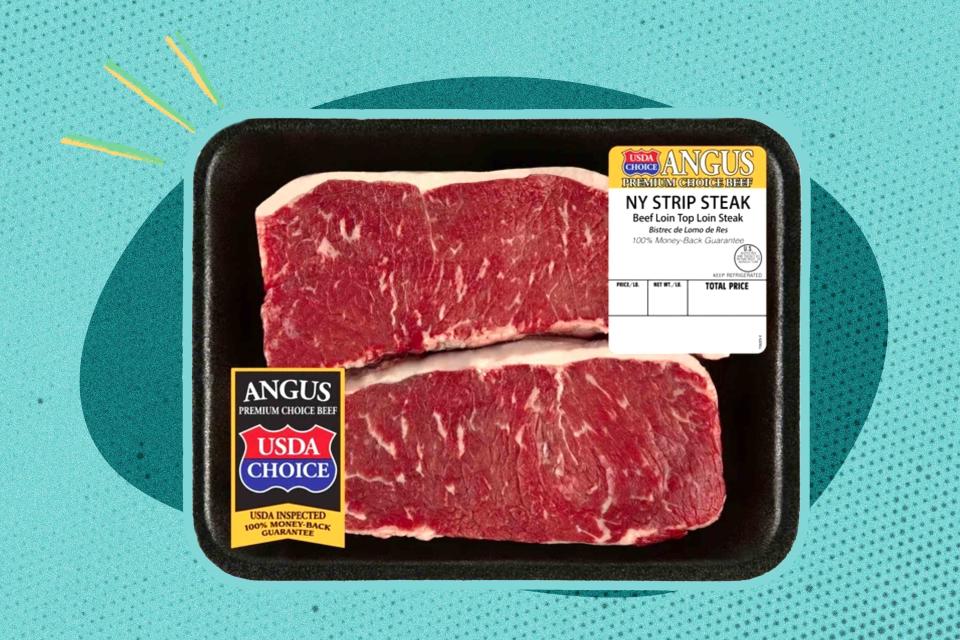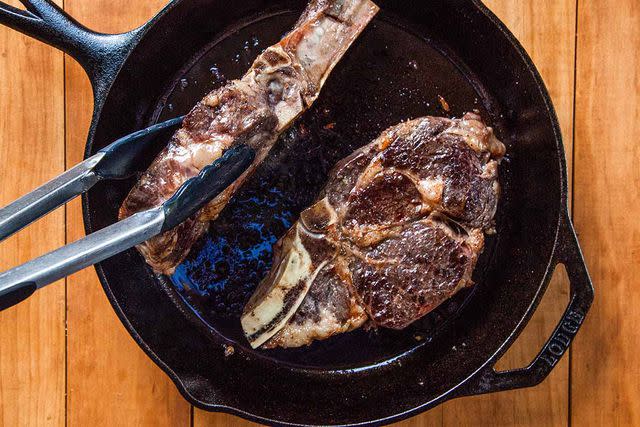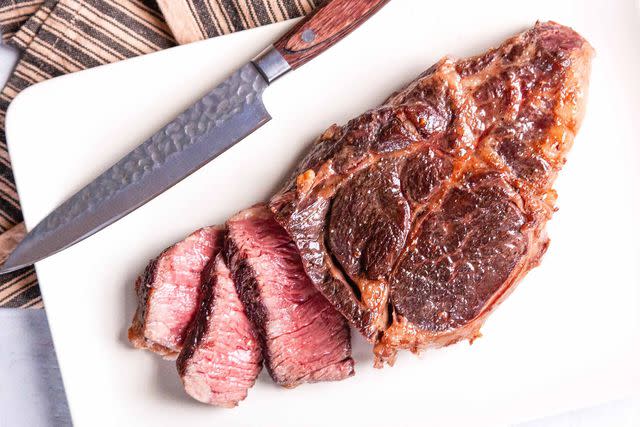Prime vs. Choice Beef: A Rancher Explains the Difference
Is it worth paying up for one vs. the other? Here's what an expert says.

Simply Recipes / Photo Illustration by Wanda Abraham / Retailers below
I've stood in front of the meat section at the grocery store for an awkwardly long time, trying to figure out what to buy—lost in a maze of prices and labels like USDA Prime and USDA Choice, in pursuit of finding the right cut of meat that's delicious and won't break the bank.
The USDA grades beef based on its quality and marbling, ensuring consistency and informing buyers about the tenderness, juiciness, and flavor of the beef they buy. What do these grades mean and is it worth paying up for one vs. the other? I called up my favorite local rancher, Steve Schubart, owner of Grass Cattle Company, to get a download on when I should choose USDA Prime vs. opt for USDA Choice. Here's what I learned.

Simply Recipes / Irvin Lin
What Is USDA Prime?
USDA Prime is the crème de la crème of beef. It's awarded to the top three percent of all beef graded in the United States. This status comes from its abundant marbling—those beautiful veins of fat running through the meat. This marbling is not just for show; it's the key to Prime's exceptional flavor, tenderness, and juiciness. Beef graded as USDA Prime is more expensive than USDA Choice.
When To Choose USDA Prime
Opt for USDA Prime when you're looking to impress, whether it's a special occasion, a romantic dinner, or when you want to treat yourself. It's the kind of beef that makes a statement all on its own.
Schubart says, “If steak is the number one centerpiece on the plate, you’ll want a Prime cut that’s full of fatty marbling.”
Tips for Cooking USDA Prime Beef
With great beef comes great responsibility. The best way to honor USDA Prime beef's richness is to let its flavor shine—think grilling or pan-searing. High heat quickly cooks the outside while preserving the tender, juicy interior.
Prime beef doesn't need much dressing—a bit of salt, pepper, and maybe some fresh herbs are all you need to let its natural flavors take center stage.
Schubart recommends that you cook it in olive oil or butter with salt and pepper, and if there’s a big fat cap on your Prime cut, “cut that thing off and render it off in a hot cast iron, then grill the steak in its own fat.” Trust the rancher.

Simply Recipes / Irvin Lin
What Is USDA Choice?
USDA Choice is like a dependable friend who never lets me down. It's more widely available than USDA Prime and offers a fantastic balance of tenderness, flavor, marbling, and affordability. While it might not have as much marbling as USDA Prime, Choice cuts are high-quality beef beyond delicious when cooked properly.
When To Choose USDA Choice
Choice is my go-to for everyday meals that pack a punch in flavor and satisfaction. It's versatile, working well across a range of dishes and cooking methods, and it's easier on the wallet compared to Prime. Whether it's a weeknight steak dinner, a hearty beef stew, or a Sunday roast, Choice has got me covered. Typically, if the beef isn’t the main character of my dish, I’m happy to choose a more budget-friendly option.
Tips for Cooking USDA Choice Beef
The slightly lower fat content in Choice beef means it benefits from moisture-adding cooking methods like braising, slow cooking, or marinating before grilling or broiling. These techniques help to tenderize the meat and infuse it with flavor, making for a delicious meal every time.
“Choice cuts take a marinade or spice rub particularly well because they’re not as fatty,” according to Steve. “If you’re doing a stew or braise, put veggies underneath the cut of Choice beef—these will become your aromatics.”
Not All Beef Has a USDA Grade
Not all beef sold gets a USDA grading—it's a voluntary system. In fact, a significant amount of beef sold in markets and served in restaurants doesn’t undergo USDA grading. This doesn't mean the beef is of lower quality; rather, it simply hasn't been classified by the USDA.
How do you ensure you're still getting a good piece of meat?
Get to know your butcher or meat supplier. Local butchers and farm shops often source high-quality, locally-raised beef that may not be USDA-graded but is nonetheless delicious. They can give you the scoop on the meat’s origin, how it was raised, and its quality.
Look for signs of quality. Even without a USDA stamp, good beef should have a rich, red color and, depending on the cut, some degree of marbling. The meat should also be firm to the touch and have a fresh, not overly gamey, smell.
Consider alternative certifications and labels that indicate quality care and feeding of the animals, such as "grass-fed," "organic," or "locally raised." These often suggest that beef comes from producers committed to high standards and sustainable practices.
Read the original article on Simply Recipes.

